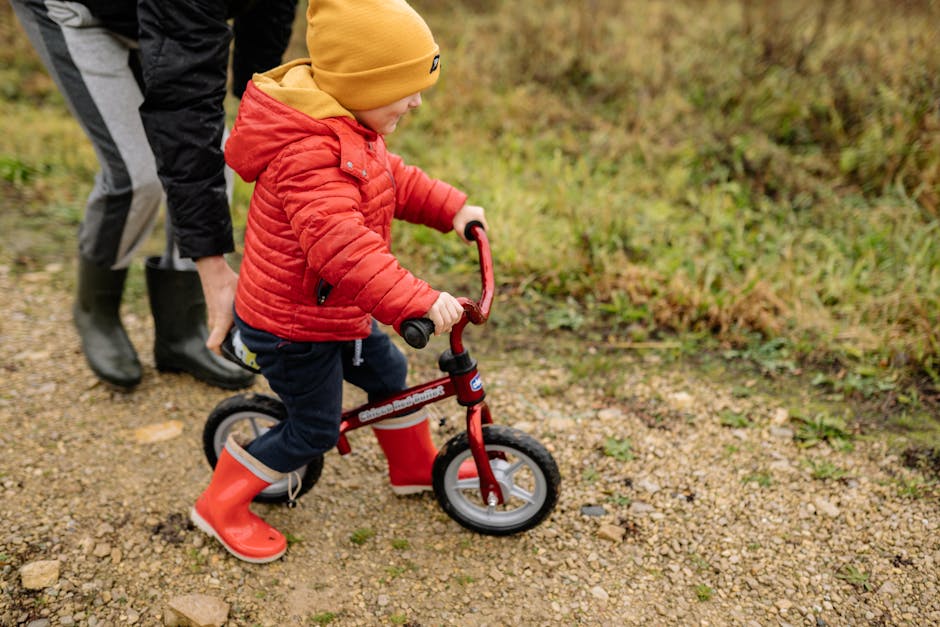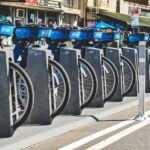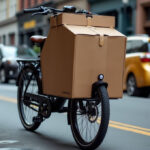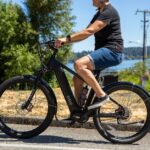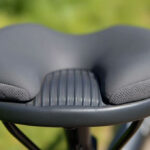Ensuring Kid’s Safety on Ebikes: An Essential Guide for Parents
Ebike Safety for Kids is a crucial concern that every parent should take seriously. As ebikes become more popular, we see more children zipping around parks, neighborhoods, and even busy streets. But with this increase in use comes a rise in safety issues. To protect your children, follow these quick safety tips:
- Always wear a helmet: Proper head protection can prevent serious injuries.
- One rider only: Never allow multiple children or adults on one ebike.
- Be visible: Use lights and wear bright clothing to ensure others can see your child.
- Understand the rules: Make sure your child knows traffic laws and safe riding practices.
- Supervision: Ride along with your child initially to teach safe habits.
- Choose the right ebike: Make sure it’s age-appropriate and manageable for your child’s size.
Ebike usage is soaring. An electric motor makes them more accessible and fun, but also potentially hazardous. A recent UCLA study highlighted that using an ebike is more likely to result in an injury than traditional bikes, motorcycles, or cars. Pediatricians report injuries ranging from head trauma to broken bones, emphasizing the need for informed parental guidance.
Parents aren’t always aware of these risks. Tragically, incidents like the death of 12-year-old Molly Steinsapir, who lost her life in an ebike accident, remind us how critical this knowledge is. The rapid growth of the ebike industry means safety regulations are still catching up. This makes it imperative for parents to set strict guidelines and educate themselves about ebikes for their children’s safety.
Riding an ebike can be a fun and efficient way for children to get around, but only if done safely. Let’s dive deeper into understanding how you can ensure your child’s ebike rides are both enjoyable and secure.

Basic Ebike Safety for Kids glossary:
Understanding Ebikes and Their Classes
Ebike safety for kids starts with understanding the different types of ebikes and their classifications. Knowing these can help you choose the right ebike for your child and ensure they ride safely.
Class 1 Ebikes
Class 1 ebikes are pedal-assist bikes. This means the motor only works when the rider is pedaling. These bikes have a top speed of 20 mph. They are often recommended for younger riders because the motor won’t activate unless the child is actively pedaling, making it easier to control the speed.
Class 2 Ebikes
Class 2 ebikes have a throttle that can propel the bike without pedaling. Like Class 1, they also have a top speed of 20 mph. These bikes can be more challenging for younger riders due to the throttle, which can cause sudden acceleration.
Class 3 Ebikes
Class 3 ebikes are the fastest of the three classes. They are pedal-assist bikes but can reach speeds of up to 28 mph. Because of the higher speeds, these ebikes are generally restricted to riders aged 16 and older. The increased speed can lead to more severe injuries if an accident occurs.
Age Restrictions and Safety Considerations
While there are no federal age restrictions for Class 1 and Class 2 ebikes, many states have their own laws. The Consumer Product Safety Commission advises against children under 13 years old operating motorized vehicles that can travel faster than 10 mph.
Injury statistics highlight the risks. For instance, a report from the U.S. Consumer Product Safety Commission showed a 21% increase in injuries related to micro-mobility devices, including ebikes, in 2022. Most injuries occurred among children aged 14 and younger, who made up 36% of all injuries despite being only 18% of the U.S. population.
Understanding these classes and restrictions helps parents make informed decisions about which ebike is appropriate for their child. Always check your state’s e-bike laws to ensure compliance and safety.
Next, we’ll explore the common injuries associated with ebikes and what risk factors to watch out for.
Safety Concerns and Common Injuries
When it comes to ebike safety for kids, understanding the risks and common injuries is crucial. Let’s explore the statistics and factors that contribute to these injuries.
Common Injuries
Injury statistics show that ebike-related accidents are on the rise. According to the U.S. Consumer Product Safety Commission, injuries from micro-mobility devices, including ebikes, increased by 21% in 2022.
Here are some of the most common injuries:
- Concussions: Head injuries are prevalent, especially in high-speed crashes. Even with a helmet, severe impacts can lead to concussions.
- Fractures: Broken bones are another common injury, often occurring in the arms, legs, or collarbone.
- Collisions: Accidents involving other vehicles, pedestrians, or stationary objects can result in a variety of injuries, from bruises to more serious trauma.

Risk Factors
Several factors contribute to the likelihood and severity of injuries:
- Speed: Ebikes can travel at speeds up to 28 mph. Higher speeds increase the risk of severe injuries. For instance, Class 3 ebikes, which can go up to 28 mph, are often involved in more serious accidents.
- Lack of Skill: Many young riders lack the necessary skills and experience to handle an ebike safely. Unlike manual bikes, ebikes require a different level of control and awareness.
- Road Safety Knowledge: Knowing the rules of the road is vital. Unfortunately, many young riders are not well-versed in traffic laws and safe riding practices.
Concussions
Concussions are a significant concern. Even with a properly fitted helmet, the impact from a fall or collision can cause a concussion. Always ensure your child wears a helmet that meets the standards set by the Consumer Product Safety Commission.
Fractures
Fractures are common, especially in the arms and legs. High-speed crashes or sudden stops can throw a rider off balance, leading to falls that result in broken bones.
Collisions
Collisions with other vehicles or stationary objects can cause a range of injuries. Teaching your child to be aware of their surroundings and to follow traffic rules can help reduce the risk of collisions.
Understanding these risks and injuries can help you take the necessary precautions to keep your child safe while riding an ebike.
Next, we’ll discuss the essential safety gear every child should have when riding an ebike.
Essential Safety Gear for Kids
When it comes to ebike safety for kids, the right gear can make all the difference. Ensuring your child is well-equipped with essential safety gear can significantly reduce the risk of injuries. Let’s break down the key items they need:
Helmets
Helmets are the single most important piece of safety gear. They protect your child’s head from serious injuries like concussions.
- Importance: Wearing a helmet can reduce the risk of head injuries by up to 85%. It’s a must-have for every ride.
- Proper Fit: Ensure the helmet fits snugly. It should sit level on your child’s head and not tilt back or forward. Measure your child’s head and choose the right size.
- Chin Strap: The chin strap should be tight enough that only one or two fingers can fit between the strap and the chin. This ensures the helmet stays in place during a fall.

Visibility Gear
Being seen is crucial for safety. Visibility gear helps make your child more noticeable to drivers and other road users.
- Lights: Equip the ebike with front and rear lights. This is especially important for riding in low-light conditions.
- Bright Clothing: Encourage your child to wear bright or fluorescent clothing. These colors stand out, making them more visible during the day.
- Rearview Radars: Consider adding a rearview radar to the ebike. This can alert your child to approaching vehicles, giving them more time to react.
Protective Clothing
Protective clothing can help prevent injuries in case of a fall or collision.
- Pads: Elbow and knee pads provide extra protection for joints, which are often the first to hit the ground during a fall.
- Gloves: Gloves protect your child’s hands from scrapes and bruises while improving grip on the handlebars.
- Reflective Gear: Add reflective strips or stickers to your child’s clothing and ebike. These improve visibility at night by reflecting light from headlights and street lamps.
By equipping your child with the right safety gear, you can help ensure their rides are not only fun but also safe.
Next, we’ll dive into some essential tips for safe ebike riding.
Tips for Safe Ebike Riding
Riding an ebike can be a fun and healthy activity for kids, but safety should always come first. Here are some essential tips to ensure your child rides safely.
Road Safety Knowledge
Understanding the rules of the road is crucial for safe riding. Kids need to know how to steer streets and pathways safely.
- Rules of the Road: Teach your child to stop at all intersections, whether marked or unmarked, and to respect traffic lights and stop signs.
- Situational Awareness: Encourage your child to always pay attention to their surroundings. They should avoid distractions like cell phones or headphones while riding.
Safe Riding Habits
Good riding habits can prevent accidents and injuries. Here are some key practices:
- Single Rider: Discourage your child from taking passengers on the back of their ebike. This can make the bike harder to control.
- No Stunts: Advise your child against performing stunts or tricks. These can easily lead to falls and injuries.
- Cautious Riding: Teach your child to ride at a safe speed and to be prepared to stop or slow down quickly if needed.
Parental Supervision
Supervision is essential, especially for younger riders. Here’s how you can help:
- Ride Along: If possible, ride along with your child. This allows you to monitor their riding habits and provide immediate feedback.
- Route Planning: Plan safe routes for your child to follow. Avoid busy streets and look for bike paths or quiet neighborhood roads.
- Safety Checks: Before each ride, perform a quick safety check on the ebike. Ensure the brakes, lights, and tires are in good condition.
By following these tips, you can help ensure your child rides their ebike safely and responsibly.
Next, we’ll discuss how to choose the right ebike for your child.
How to Choose the Right Ebike for Your Child
Choosing the right ebike for your child involves considering several key factors to ensure safety and suitability.
Age-Appropriate Models
When selecting an ebike, it’s crucial to choose a model that matches your child’s age and maturity level.
- Class 1 and Class 2 Ebikes: These are generally the best options for younger riders. Class 1 ebikes have a pedal-assist feature and can reach speeds up to 20 mph. Class 2 ebikes also have a throttle, allowing them to be ridden without pedaling, but still cap at 20 mph.
- Speed Limits: The Consumer Product Safety Commission recommends that children aged 9 to 12 should not operate any product that travels faster than 10 mph. This makes Class 1 and Class 2 ebikes more suitable for younger riders, as opposed to the faster Class 3 ebikes.
Safety Features
Safety features are non-negotiable when it comes to choosing an ebike for kids.
- Brakes: Ensure the ebike has reliable brakes. Disc brakes are often more effective than rim brakes, especially in wet conditions.
- Lights: Front and rear lights are essential for visibility, especially if your child will be riding in low-light conditions.
- Sturdy Frame: A strong, durable frame can withstand bumps and minor accidents, providing better protection for your child.
Size and Weight
The size and weight of the ebike should be suitable for your child’s height and strength.
- Child’s Height: The ebike should be appropriately sized for your child. They should be able to touch the ground with their feet when sitting on the saddle.
- Bike Weight: Lighter ebikes are easier for children to handle. A heavy bike can be difficult to control and maneuver, increasing the risk of accidents.
- Ease of Control: Ensure that your child can comfortably reach the handlebars and brakes. They should be able to steer and stop the bike without straining.
By considering these factors, you can choose an ebike that is not only fun but also safe for your child to ride.
Next, we’ll answer some frequently asked questions about ebike safety for kids.
Frequently Asked Questions about Ebike Safety for Kids
Is an ebike safe for kids?
Ebike safety for kids depends on various factors, including the child’s age, maturity, and the type of ebike. The Consumer Product Safety Commission (CPSC) recommends that children aged 9 to 12 should not operate any product that travels faster than 10 mph. This makes Class 1 and Class 2 ebikes, which cap at 20 mph, more suitable for younger riders.
However, even with these guidelines, it’s crucial to provide proper training and ensure your child understands road safety rules. Always supervise younger children and ensure they wear appropriate safety gear, such as helmets and visibility gear.
How do you carry a child on an ebike?
Carrying a child on an ebike can be done safely with the right equipment and precautions. Here are some options:
- Child Seats: These can be mounted on the front or rear of the ebike. Ensure the seat is securely attached and that your child is strapped in properly. Always check the weight limits specified by the manufacturer.
- Trailers: Bike trailers are another safe option for carrying children. They offer more stability and are generally safer than child seats, especially for longer rides. Make sure the trailer has a sturdy hitch and is equipped with safety features like reflectors and flags for visibility.
Can you put a child seat on an ebike?
Yes, you can put a child seat on an ebike, but there are a few considerations to keep in mind:
- Mounting Options: Ensure the ebike has the appropriate mounting points for a child seat. Some ebikes come with pre-installed mounting brackets, while others may require adapters.
- Adapters: If your ebike doesn’t have built-in mounting points, you might need an adapter to securely attach the child seat. Always use manufacturer-recommended adapters to ensure safety.
- Space Requirements: Make sure there is enough space for the child seat without interfering with the rider’s ability to pedal and steer. The seat should not obstruct the rider’s view or balance.
By following these guidelines and ensuring proper installation, you can safely carry your child on an ebike. Always prioritize safety and make informed decisions based on reliable information.
Conclusion
At Doot Scoot, our primary concern is ensuring the safety of your children while they enjoy the benefits of ebikes. By focusing on Ebike Safety for Kids, we aim to provide parents with the knowledge and tools they need to make informed decisions.
Safety Emphasis
The rise in ebike popularity has brought to light the importance of safety measures. As highlighted by the Consumer Product Safety Commission (CPSC), injuries from micro-mobility devices like ebikes have surged. This underscores the need for proper safety gear and vigilant supervision. Ensuring your child wears a properly fitted helmet, visibility gear, and protective clothing can significantly reduce the risk of severe injuries.
Informed Decisions
Understanding the different classes of ebikes, their speed limits, and age restrictions is crucial. For younger riders, Class 1 and Class 2 ebikes are more suitable due to their 20 mph speed cap. However, even with these limitations, provide adequate training and ensure your child understands road safety rules.
Choosing the right ebike involves considering age-appropriate models, essential safety features, and the bike’s size and weight. Always prioritize models that offer robust safety features like reliable brakes, sturdy frames, and effective lighting.
Doot Scoot’s Commitment
We at Doot Scoot are dedicated to helping you steer ebikes with confidence. Our comprehensive reviews, in-depth guides, and expert comparisons aim to equip you with all the information you need. By emphasizing eco-friendly and sustainable urban mobility, we strive to make ebiking a safe and enjoyable experience for everyone.
For more insights and the best deals on ebikes, visit our Best Deals page.
The key to ebike safety for kids lies in proper education, vigilant supervision, and making informed choices. Let’s keep our children safe while they explore the joys of ebiking.
